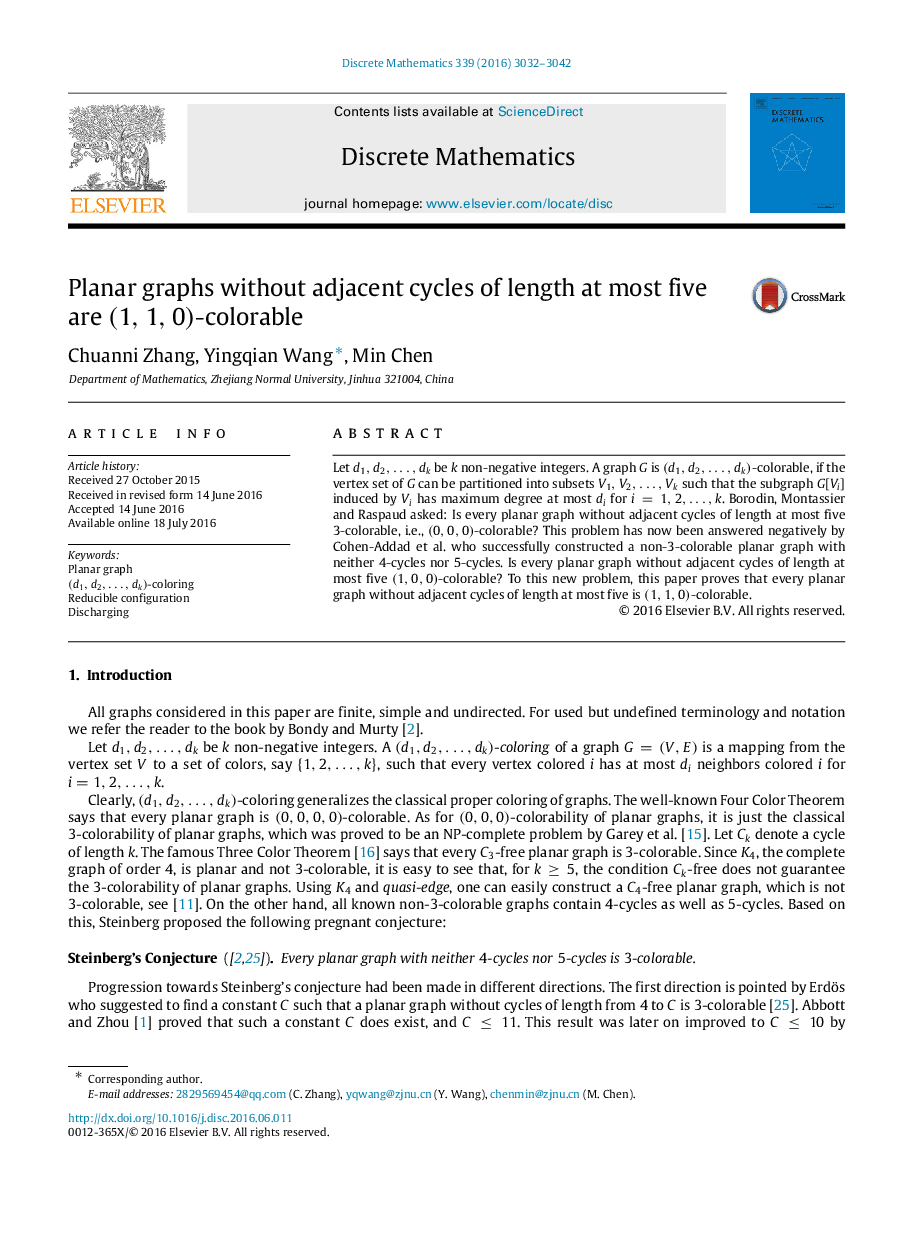| Article ID | Journal | Published Year | Pages | File Type |
|---|---|---|---|---|
| 4646781 | Discrete Mathematics | 2016 | 11 Pages |
Let d1,d2,…,dkd1,d2,…,dk be kk non-negative integers. A graph GG is (d1,d2,…,dk)(d1,d2,…,dk)-colorable, if the vertex set of GG can be partitioned into subsets V1,V2,…,VkV1,V2,…,Vk such that the subgraph G[Vi]G[Vi] induced by ViVi has maximum degree at most didi for i=1,2,…,ki=1,2,…,k. Borodin, Montassier and Raspaud asked: Is every planar graph without adjacent cycles of length at most five 3-colorable, i.e., (0,0,0)(0,0,0)-colorable? This problem has now been answered negatively by Cohen-Addad et al. who successfully constructed a non-3-colorable planar graph with neither 4-cycles nor 5-cycles. Is every planar graph without adjacent cycles of length at most five (1,0,0)(1,0,0)-colorable? To this new problem, this paper proves that every planar graph without adjacent cycles of length at most five is (1,1,0)(1,1,0)-colorable.
